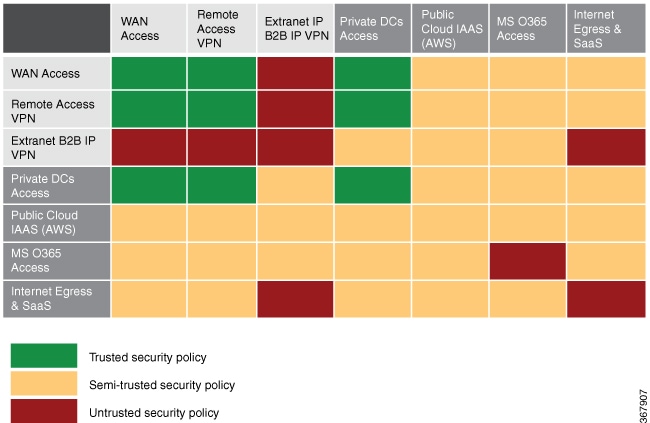Identify VNFs
The following connection patterns emerge from the analysis of Acme Corp's consumers and providers.

The table above shows which groups cannot interact with each other (red), which groups can interact, but with certain controls (orange), and which groups can interact without additional security services (green).
Partners accessing application through MPLS, WAN, Internet, and employees represent the consumers.
How to Identify VNFs for your Design
The type of VNFs you need depends on your traffic patterns and volume. For example, if you are creating a consumer chain for traffic coming from your employees, you require fewer firewalls as the source of such traffic is considered to be trusted.
SAE supports both–Cisco VNFs and third-party VNFs supported by Cisco. Based on your traffic patterns and volume, select the VNF that suits you best. The following are some possible options.
-
Routing: CSR
-
Firewall: FTDv, ASAv, Palo Alto Firewall
-
Load Balancing: AVI, F5
VNF features and licensing costs are the additional criteria that you must consider while selecting the VNFs for your service chains.
See Cisco CSP 5000 Series Datasheet for a complete list of supported VNFs.
 Feedback
Feedback